Mike Senese, Executive Editor of Make

Cool Tools Show 282: Mike Senese
Our guest this week is Mike Senese. Mike is the executive editor of Make: magazine. He’s worked as a DIY journalist and TV host throughout his career, with roles at Wired and ReadyMade magazines, and on Discovery and Science channels. You can find Mike on Twitter and Instagram @msenese.
Subscribe to the Cool Tools Show on iTunes | RSS | Transcript | See all the Cool Tools Show posts on a single page
Show notes:
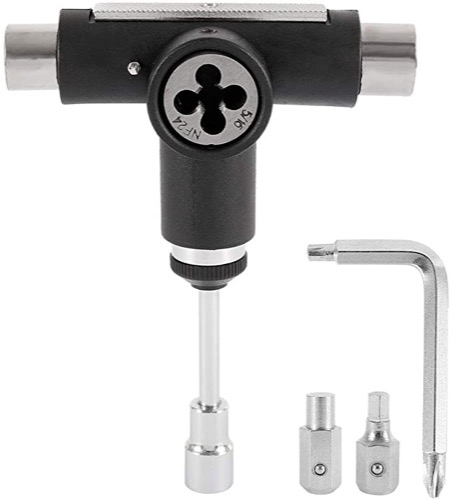
Skateboard multi-tool ($19)
This is a skateboard multi-tool. It’s a T-shaped tool that has on each end a different size socket. It’s got a ratcheting socket on one end, so you can bolt on your trucks. It’s got a die on one side, so if the axle for your trucks is getting chewed up and you can’t get the nuts on enough to get your wheels on and off, you can redo it. The ratcheting aspect of it, you can hear it. There’s something really pleasing about that. As you just twist those wheels on, you don’t have to constantly be changing your wrist around. You just click, click, click, click, click. Put your trucks on and off, it’s really nice. And it’s been really nice for me, because over the pandemic, one of the things that me and my family have been doing is a lot of skateboarding. We built a little ramp in our garage, and my son’s just about to turn seven. We like to go out there, and we just roll back and forth. So this has been getting a lot of use. It’s just representative of the fun that we’ve been having together as a family with this as our activity.
![]()
Silicone measuring cups ($10)
One of the things that I’ve been having fun with in the garage as we roll back and forth is making these wax skulls. I bought a silicone skull mold, and just for kicks, I’ve been melting them down to wax and pouring them in, and letting it congeal and opening up and see how they look, and changing colors and melting crayons into them, having fun with it. Trying not to make a big mess. And I started getting to the point where I was thinking, “Ah, I really wish that I had a silicone cup,” because when the wax hardens off of these molds, you can just fold them apart and the wax pops out and breaks apart. And it’s just so easy to manipulate. But it’s a pain in the butt with the tin cans and everything else that I’ve been using. So I looked on Amazon, and of course, there’s like 500 variations of that exact thing. So I bought a set that looked suitable for me. It was maybe a little bit less than $10. It came with two larger ones and a couple smaller ones, and it came right away. And they’re pliable and just so satisfying.
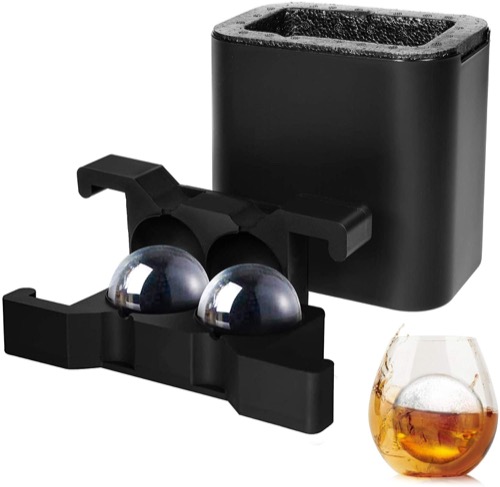
Clear Ice Ball Maker ($30)
If you guys have ever tinkered with freezing ice, it always comes out cloudy. There’s actually a clear ice community out there, and it’s super nerdy and awesome and really cool. It’s been fun to see this clear ice community figure out how to really dial in small and efficient clear ice system. There was Kickstarters about this, and now you can actually find these different forms of these clear ice tools, like big whiskey ice cube bowl systems. You can find them online, all the big outlets. And it involves doing directional freezing. So you’ve got a pool of water, and then you’ve got the mold that sits above it with water that leads into it. And as the ice freezes, it’ll freeze from the mold down into that pool of water, because the pool of water is insulated around the outside of it. And as it freezes downwards, it’s pushing the air downwards that’s trapped inside of it. So you get the ice cube without the pockets of air in it, which causes the cloudiness. And it works, it works really well.
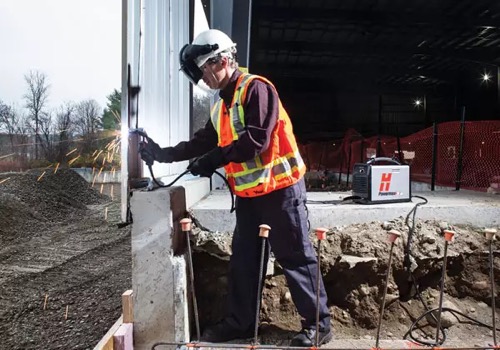
Plasma cutter (I’ve been playing with the Hypertherm Powermax 30 Air) ($2,000)
Plasma cutting, for me, is the closest like feeling a superhero, like I actually have superhuman abilities. Welding being second, because you’ve got welding, you’re fusing two pieces of metal together. But with plasma cutting, you are cleaving materials apart and it just doesn’t make sense that you’ve got the ability to do this. And they’re compact, and it’s just so powerful. It’s just kind of astounding. I recently was able to access the Hypertherm Powermax 30 Air. It caught my eye because it has a built-in air compressor, and one of the things that was always challenging with welding and with plasma cutting is that you need to have an air system of some sort. With a welder, if you’ve got a MIG welder, you have to have your gasses for that. TIG welding, same thing. The tungsten gas for TIG welding. With plasma cutting, you have to have a big compressor that’s got enough force to keep the plasma moving, and then enough storage that it just doesn’t constantly recharge itself. And I don’t have that in my house. I don’t have space for big air compressor systems. Then I saw this, and it’s kind of newish, and it’s got a built-in compressor. It’s pretty amazing.
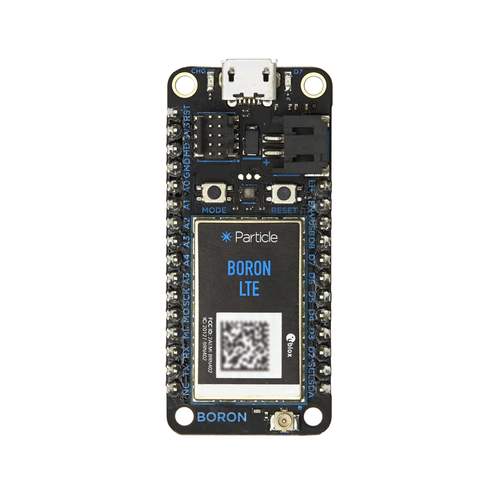
Particle Boron microcontroller ($60)
Particle is a microcontroller company, and they’ve got a focus on IOT. They work with a lot of companies to put devices into their products so that they can communicate with the internet. I know Jacuzzi’s always one of the big ones that they talk about. I guess there’s a connected Jacuzzi hot tub that you can get. But you’ll find some of their devices inside of the rideshare scooter setups and so forth. And Boron is one of their products. It’s one of the boards that they’ve had. It’s been around for a few years, a couple years now. And it works with cellular data. So some of the boards, originally Arduino came out and you’d have to plug it in with USB, set it up, program it, and then you could unplug the USB, plug it into a power source, and it would run the program that you have working on it to make a servo move, or to make a light blink. A million other exciting things. And then some of the companies started adding in WiFi as a capability, way to communicate with it, or to control it or to connect with it. Then Particle did the same thing where they had some WiFi on some of their boards, and then they added a couple of boards that had cellular capabilities and LTE cellular capability. Boron was one, and I think the other was the Electron. Again, professional use in mind, and something that I didn’t really tinker with much at all, but we reported about it. And then earlier this year, they made a big announcement that they were adding a tier to their cellular package for makers that would allow for free cellular data and free use of the Particle cloud platform. And I think that’s just so exciting, because if you’re working on a project that needs some form of long-range communication, WiFi was really the only thing you could do that was free. But cellular is everywhere. Everybody’s got a cellphone now, and it’s hard to go too far away from any populated area without having cell coverage. And now, you could create a project with the Particle board, a maker-scale project, and interact with it anywhere. And it just opens up all these exciting ideas of things that you could build or make or do.
About Mike’s Blog:
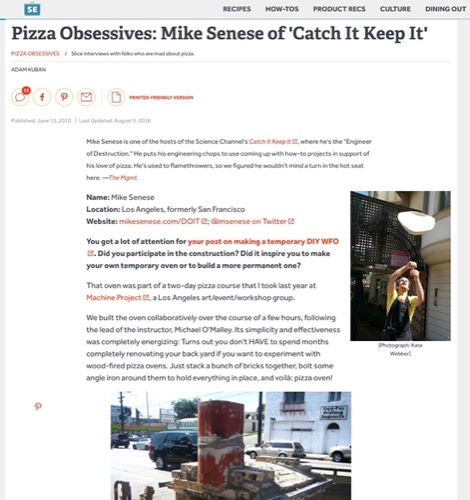
Pizza making’s really been one of my biggest passions since forever. When I was in high school I worked in pizza places, when I was in college I worked in pizza places, and even after college. And it’s just been this journey of, how do you make the perfect pizza? And so I’ve spent a lot of time, a number of years just trying to figure out. So I just spent years and years collecting pieces of information about different ways of making all the ingredients decently, and how to use your kitchen appliances in different ways. How to use your broiler to cook pizza, instead of just using the oven itself, or how to use the stove top, or barbecuing. I actually barbecued pizza, which a lot of people, I think, are doing now. But that’s probably the second-best way of making pizza, aside from having your own wood-fired oven.I’ve got my site that I was maintaining really actively for a long time called mikesense.com/doit. And it was just a lot of DIY-projecty stuff. But all of my pizza blogging ended up in there, too.









